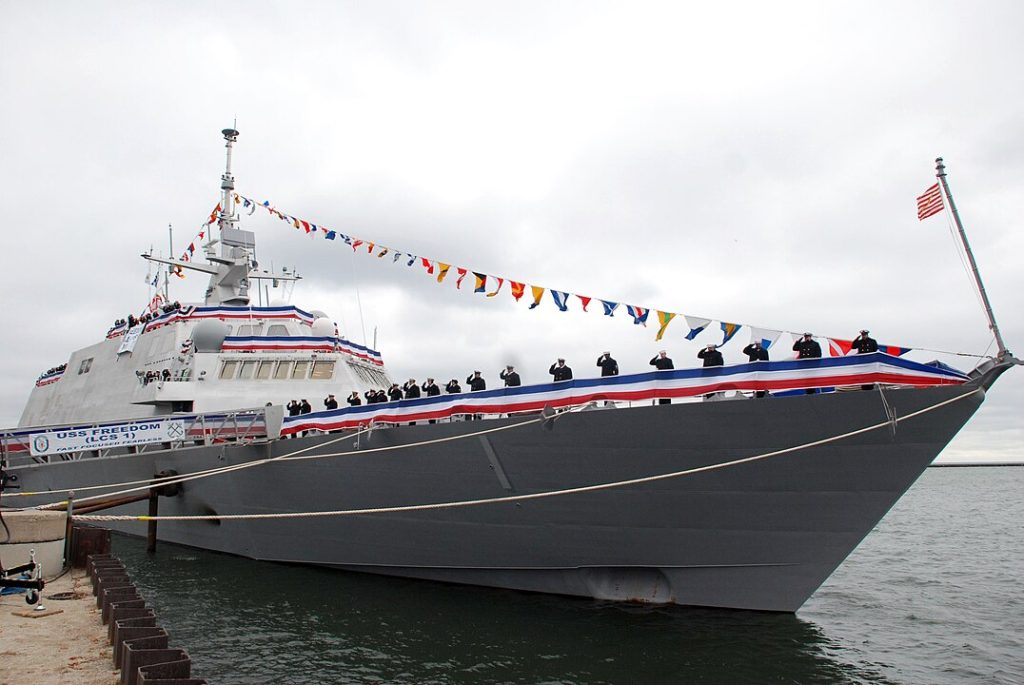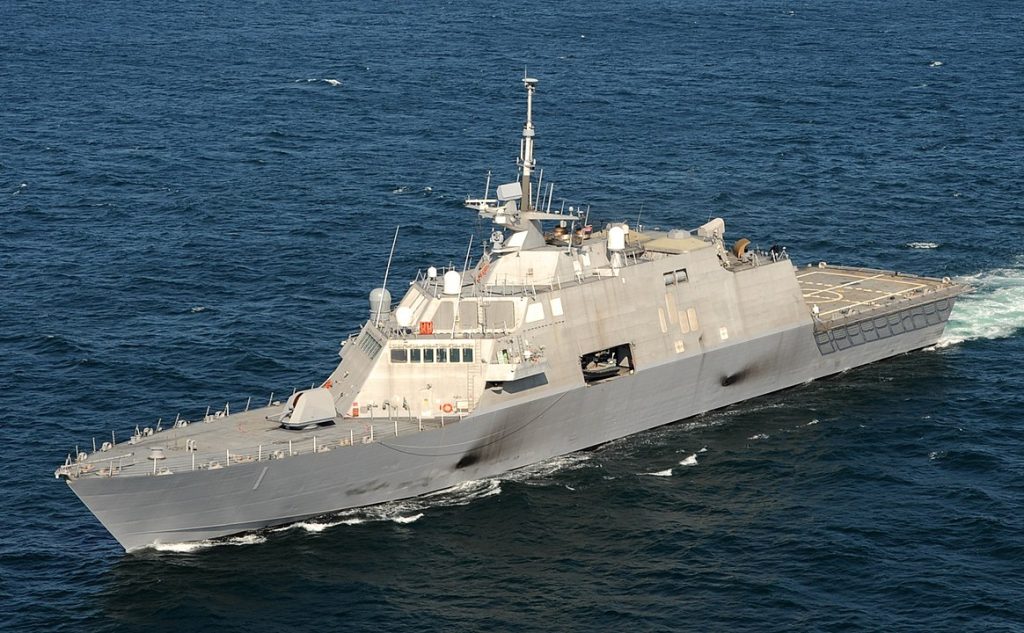
In July 2016, the USS Freedom, one of the U.S. Navy’s littoral combat ships (LCS), set out to participate in the world’s largest naval exercise, RIMPAC. The LCS class was touted as a breakthrough in naval technology, small but mighty warships able to operate in near-shore environments (the littoral zone), nimble enough to counter submarines, mines, and surface threats. Yet beneath the surface of this promise lay a troubling reality: a history of operational failures, design flaws, and staggering cost overruns.

The Freedom’s participation in RIMPAC came at a critical juncture, aimed at demonstrating the vessel’s capabilities amid mounting skepticism. But even this mission was fraught with issues, including an engine disabled by “galloping corrosion,” evidence of a pervasive problem within the LCS program that had seen billions in taxpayer dollars spent on a fleet that struggled to fulfill its envisioned roles.

The LCS program’s woes stem from its inception. Originally pitched by then-Chief of Naval Operations Adm. Vernon Clark in 2002, the LCS was to be fast and versatile, with interchangeable mission packages for a variety of threats. However, professionals within the Navy warned against the program’s ambition and the technological challenges it posed. Despite these cautions, the Navy pressed forward, driven by a desire for a new type of warship that could be built quickly and inexpensively.

As the first LCS vessels entered service, they were beset by problems. The ships, costing upwards of $500 million each—more than double the initial price estimate—were prone to mechanical failures. The Freedom class, in particular, faced issues with a combining gear that linked the diesel and gas engines to the propulsion system, leading to multiple at-sea breakdowns. The emphasis on speed compromised fuel efficiency, constraining the ships’ operational range. Even their primary missions, such as mine-hunting and anti-submarine warfare, were hampered by ineffective technology and systems that failed to work in unison.

Despite the setbacks, the LCS program found staunch defenders in the Navy and Congress. Navy Secretary Ray Mabus, serving from 2009 to 2017, became a champion of the LCS, emphasizing the need for a large and varied fleet. The political calculus was apparent, with ship contracts spread across shipyards in different states, creating jobs and political support. This strategy, however, meant the Navy was committed to two distinct LCS designs, the Independence and Freedom classes, neither interchangeable nor cost-effective in the long term.

Efforts by Defense Secretaries Chuck Hagel and Ash Carter to limit the program faced opposition and achieved only partial success. Despite increasing evidence of the LCS’s flaws, political pressure and the sway of defense contractors led to the program persisting.

The result was a fleet that cost the taxpayers significantly, both in monetary terms and in the opportunity cost of other, potentially more viable naval investments. According to John Pendleton, a former top analyst at the Government Accountability Office, the lifetime cost of the LCS fleet could reach or surpass $100 billion, with taxpayers receiving fewer than 30 ships of limited survivability and capability.
related images you might be interested.









